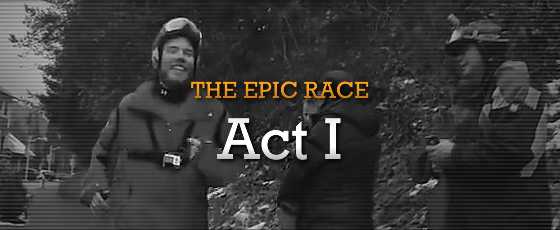Promotions
Epic Race – Act I: An Idea Worth $1,000,000 in Marketing…and Risk


BLANCHARD
It’s time we talk about the Epic Race.
For the most part I’ve been silent on the subject. From my Colorado perch I’ve watch the idea unfold, the momentum build, and the critics rave. But I’ve also seen it almost completely backfire.
With the winners’ paperwork signed and sealed, I think it’s time to talk about what was good, what was bad, what went right, and, most importantly, what went wrong.
A Risky Proposition
On the surface, the Epic Race was a brilliant idea.
By requiring significant travel, only a certain demographic could participate. By requiring significant skiing, on a certain level of rider could make an attempt. By requiring significant content sharing, participants became brand advocates. These filters combined to turn a small, vocal slice of their most important market into loud and proud evangelists.
But if that reference to “significant travel” raised any red flags, it should. Because that is where the Epic Race is different from any other contest that resort marketing has ever seen.
Entry Costs vs Rewards vs Odds vs Skill
Every contest has an entry cost. Sometimes this cost is nothing more than 5 seconds of your life to move and click a mouse. Other times it’s hundreds of dollars (or more) for registration fees.
But choosing to enter the contest depends on both the cost and the likelihood of a desired result. If the cost of entry is $1, the reward is worth $5, and the odds are 50/50, you’d be foolish not to try.
But if the cost is $1, reward is worth $5 and the adds are 1:10,000, it’ll be tough to find any takers.
The Epic Race took this example to the extreme. Not counting time, each racer’s travel added up to about $5,000 (over $1,000,000 across all participants), the reward was worth around $30,000/each ($300,000 total), and the odds of winning were, on paper, 1:20 (10 winners, over 200 participants).
The X Factor
But that’s like saying a team in the NCAA Tournament has a 1:64 chance in winning which is absurd for a 16 seed. March Madness odds, like Epic Race odds, have an x-factor in the skill of the participants. It takes some of the perceived “chance” out of the equation.
Combine these elements and you find yourself leaning heaving on yet another factor: rules.
The shiny reward for Vail in the distance – brand advocacy (for life) from their best customers – was enough to deal with extremely high entry costs, big rewards, stiff odds, individual skill, and very detailed rules to keep such a perfect storm in check.
As we’ll see on Wednesday, it all started off well enough.
About Gregg & SlopeFillers
I've had more first-time visitors lately, so adding a quick "about" section. I started SlopeFillers in 2010
with the simple goal of sharing great resort marketing strategies. Today I run marketing for resort ecommerce and CRM provider
Inntopia,
my home mountain is the lovely Nordic Valley,
and my favorite marketing campaign remains the Ski Utah TV show that sold me on skiing as a kid in the 90s.
Get the weekly digest.
New stories, ideas, and jobs delivered to your inbox every Friday morning.
